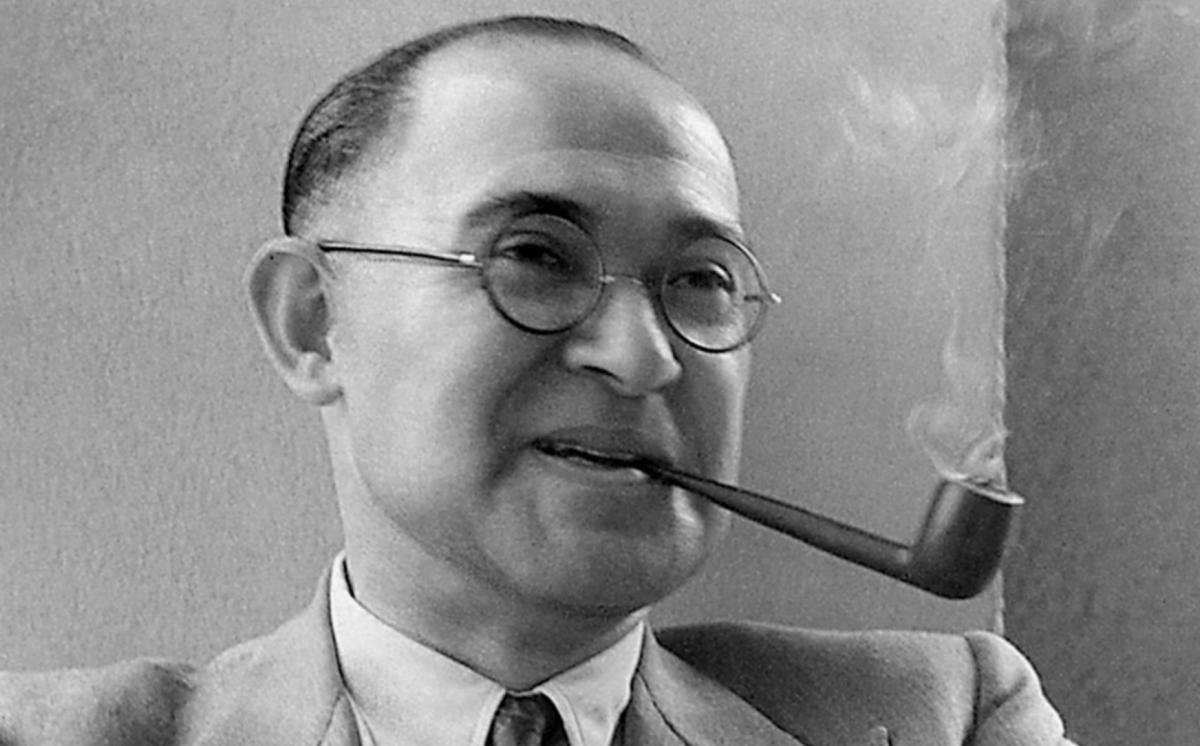Sarajevo by Omar El-Nagdi (1931-2019) $1,145,000

Omar El-Nagdi is a multifaceted master of calligraphy, expressionism, abstract art, making him one of the most celebrated contemporary Egyptian artists. His paintings touch on the surrealist, the serene and the sensory. He began his artistic education at the Faculty of Fine Arts of Cairo under the tutorship of Ahmed Sabry (1889-1955) before attending the Academy of Fine Arts in Venice in 1959, where he studied frescoes and mosaics. During his travels between Venice and Rome in 1959–60, he found himself at the centre of avant-garde artistic and intellectual circles, with Italian painter Giorgio de Chirico becoming one of his most influential mentors. El-Nagdi was referred to in the press as ‘the Egyptian Picasso’ before turning 30.
El-Nagdi’s paintings translate Egyptian life into timeless symbolism that is deeply felt. “My artistic character developed between the Bab Al She’reya neighbourhood and rural Egypt. The influences of the popular area’s noise and the quietness of the rural environment were complete opposites. This affected my artistic personality by making me unable to commit to a certain artistic style,” El-Nagdi describes.
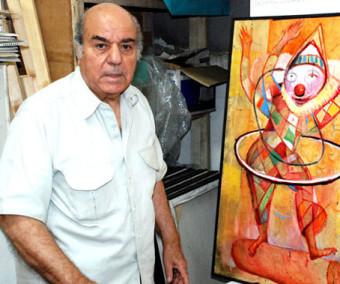
Painted in 1992, Sarajevo is the top selling artwork from the Middle East at auction from a live artist at $1,145,000 and is widely considered to be “one of the most poignant depictions of the horrors of war ever painted since 1937, when Pablo Picasso realized his iconic piece Guernica,” writes writes British auction house Christie's.
“Although El-Nagdi is generally known for his colourful folkloric depictions of daily life, Sarajevo demonstrates his ability to capture the essence of pain. The Sarajevo triptych is undeniably his most important and ambitious piece. As the title suggests, the work takes as its subject the tragedies that befell the city during the Serbo-Croatian-Bosnian conflict of 1990–94, particularly the ethnic cleansing of the Muslim Bosnian and Croat population by Bosnian Serbs.”
Omar El-Nagdi was deeply affected by the persecution of the Bosnian Muslims and the ongoing massacres by Bosnian Serbs. He felt compelled to react to these monstrosities by spontaneously expressing himself in his monumental composition of Sarajevo.
“El-Nagdi's Sarajevo is an unprecedented example of its type in the History of Art not only because of the artist's unparalleled imagination of the scene, but also because of its unique subject matter. El-Nagdi, a Muslim Egyptian painter represents the slaughter of his Bosniak brothers in Sarajevo and its surroundings on the traditionally Christian format of the triptych, a theme that no other artist has ever dared to paint on such a vast scale,” Christies explains.
El-Nagdi’s decision to tackle this difficult subject can be seen as reflecting a broader trend among Modern and Contemporary Middle Eastern artists who often grapple with notions of identity, as well as with the cultural and political events that shape people’s thoughts and lives.
Construction of the Suez Canal by Abdel Hadi El Gazzar (1925 - 1965) $1,023,750
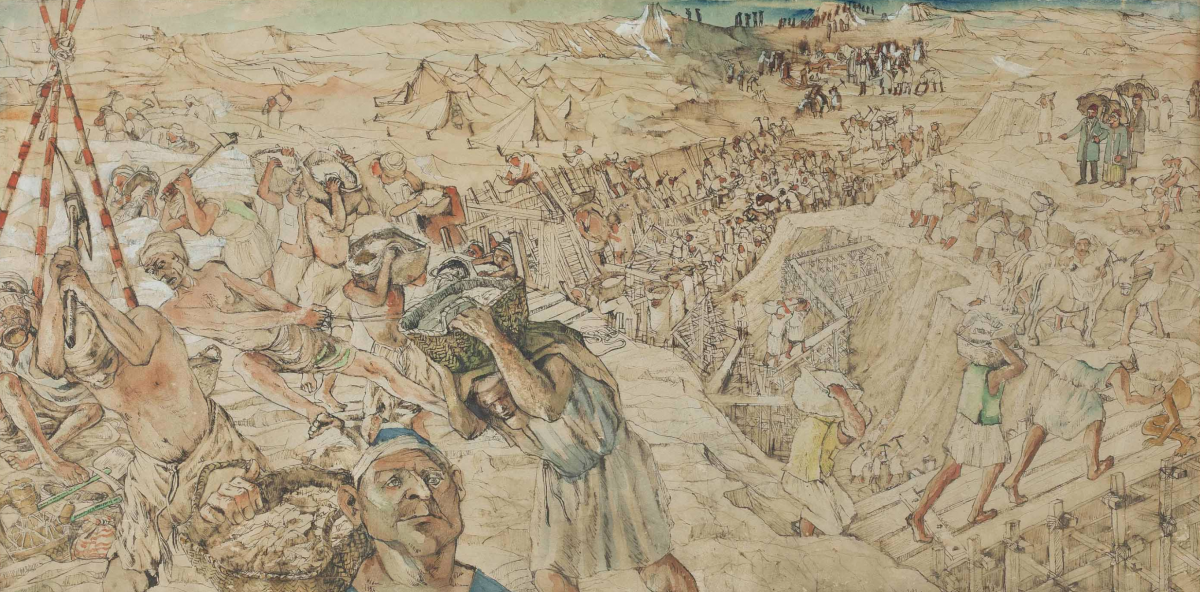
Born in Alexandria, Egypt in 1925, Abdel Hadi El Gazzar was one of the most important Egyptian artists of the postwar era. He moved with his family to Cairo in 1940 where they settled in the district of Sayeda Zeinab. His depiction of the stark poverty of Cairo’s ordinary working class people led to his arrest under King Farouk’s regime. Inspired by the socio-political issues following the Revolution in 1952 and the Suez Canal Crisis, Construction of the Suez Canal from 1965 is a study for perhaps one of the most monumental and referenced works ever to have been painted by the artist. El Gazzar’s dramatic illustration of masses of helpless Egyptians is widely read as a critique of labor conditions and forced displacement in the construction of the High Dame. It is now part of the collection of the Museum of Modern Art in Cairo. The significance of this work and the fact that it was part of a major Egyptian corporate collection resulted in a record sale for the artist.
“The elaborate assessment of geometric depth of perspective emphasised by the long and curved lines heightens the underlying feeling of a difficult and long-winded path, a metaphor, once again, of the never-ending struggle. There is an element to his drawing that harks to the archaic style of hieroglyphs and Ancient Egyptian wall carvings and paintings and thus hints to the passage of time - after all the Suez Canal was originally used by the Ancient Egyptians before it was officially developed during the Khedive Ismail reign. Within the drawing El-Gazzar pays particularly special attention to the facial expression displayed on the workers' faces. The viewer's eye is especially drawn to the expression of torture and sadness that fills the man's face at the lower left of the composition”, writes Sotheby’s, one of the world’s largest brokers of fine and decorative art, jewelry, real estate, and collectibles.
“A testament to his ability to impart a sense of socio-political statement, even into a work commissioned by the very regime he questioned, Digging of the Suez Canal is undoubtedly a seminal work in the artist's oeuvre and in both Egyptian artistic and social history.”
El-Gazzar was one of Hussein Youssef Amin’s protégés from his youth and joined Amin’s Group of Contemporary Art, which rejected Western academic approaches to art and were dedicated to reviving ‘genuine Egyptian history’ shaping national identity, promoting social reform, and freedom through art. Amin was the most important figure on the arts scene in Egypt in the mid-twentieth century. He belonged to the second generation of the modern Egyptian art movement and was considered a tour de force of talent; teacher, illustrator, painter and musician. As a dedicated teacher and mentor, he influenced many generations of art students at the Faculty of Fine Arts in Cairo.
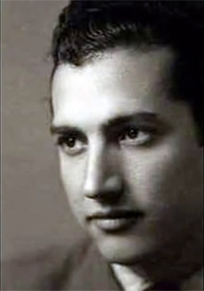
He became spokesperson for the unheard majority of the population living in poverty and would encourage artists from the poorest, least privileged of backgrounds, in his belief that such a grass-roots movement would lead to social transformation. Following in the footsteps of the surrealist artists, Amin's students condemned social injustice, political oppression and the bourgeoisie. “Amin followed the development of his students like a devoted father, even to jail, in his impassioned defence of their art and polemics, for Egyptian art of the modern period was highly controversial, dealing with socio-political issues that went hard against the party line.” Writes Sotheby’s.
The Whirling Dervishes by Mahmoud Said (1897 - 1964) $2,546,500
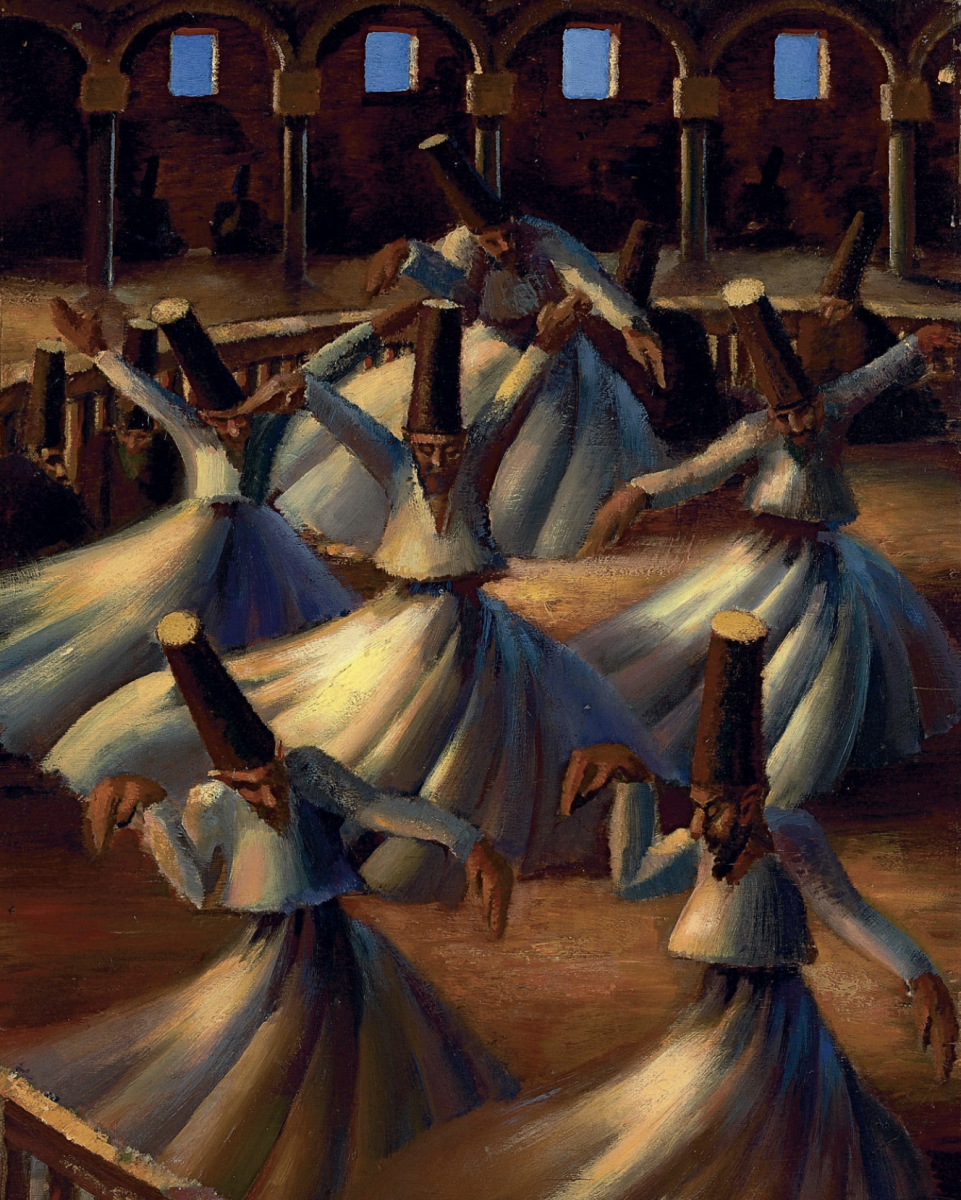
Mahmoud Said is considered the father of Modern Egyptian Painting. Born into the aristocratic circle of Alexandria, he was the son of former Egyptian Prime Minister Mohamed Said Pacha (1863-1928), and the uncle of the future queen of Egypt, Safinaz Zulficar, better known as Queen Farida. He attended some of the most prestigious schools in Alexandria and Cairo and received training from the Italian artists Casonato Da Forno and Arturo Zanieere. Before becoming a full-time artist in the 1947 at the age of 50, Said studied at the French School of Law in Cairo and held high legal positions, first as a lawyer and later as a judge.
Said broke away from academic art and the traditions of the West, using them as stepping stones to forge his own signature style which is somewhat figurative in style and classical in subject matter - making him a pioneer of modern Arab painting. His unique style is deeply rooted in the true Egyptian society and his groundbreaking artworks depict the working class, landscapes, formal portraits, and religious ceremonies such as Sufi whirling.
Even the rebellious young artists of the Art et Liberté group — the so-called Egyptian Surrealists, who were highly critical of all the other Egyptian pioneers of the First Generation — adopted Said as an honorary member and included his work in a few exhibits, selecting his famous painting, La Femme aux boucles d’ or "The Woman with Golden Locks" for the cover of their first exhibition catalogue in 1940.
Painted in 1992, The Whirling Dervishes is a unique subject for the artist whose body of work consists mainly of landscapes and portraits.
“The Sufi mystic Mawlawi Order was founded in 1273 in Konya, central Anatolia, by followers of Jalal al-Din Mohammed Balkhi-Rumi, and arrived in Egypt in the wake of the 1517 Ottoman conquest of Cairo. Much of the Egyptian aristocracy had Turkish and Ottoman roots, Mahmoud Said's family was no exception. In the earlier part of the twentieth Century Ottoman traditions were still very much prevalent in Egypt, including the Mawlawi order performing in their Semahanes, these falling into decline with the advent of the Revolution,” writes British auction house Christies.
“In the best of Mahmoud Said's painting one can see his profound affection for the anachronisms and eccentricities of Egypt of his day. The Whirling Dervishes, emotionally charged and dynamic, powerfully encapsulates this lost facet of Egyptian society.”
Mahmoud Said is the only Arab artist to date to have three paintings selling for more than $1 million at auction and remains one of the most sought-after modern Arab artists.
